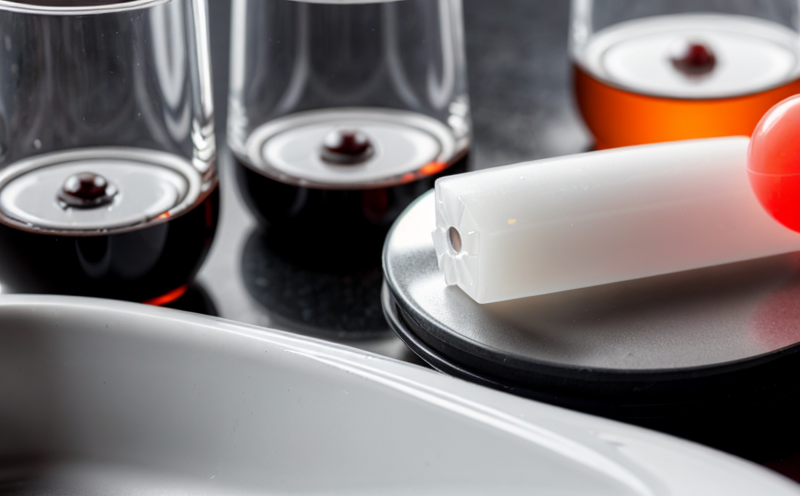ISO 13321 Nanoparticle Size Testing by Photon Correlation Spectroscopy
The ISO 13321 standard specifies a method to measure the hydrodynamic diameter of nanoparticles suspended in a liquid medium using photon correlation spectroscopy (PCS). This technique is particularly useful for analyzing colloidal dispersions, where particles are typically between 0.5 nm and 10 µm in size.
Photon Correlation Spectroscopy measures the fluctuations in light intensity caused by Brownian motion of nanoparticles within a liquid suspension. By analyzing these fluctuations, it provides information about both the size distribution and concentration of nanoparticles. This method is non-destructive and allows for real-time monitoring of particle dynamics.
The primary apparatus used in this testing involves a laser beam that passes through the sample cell containing the nanoparticle suspension. The scattered light is then collected by a photodetector, which converts it into an electrical signal. Statistical analysis of these signals yields the size distribution and dynamic properties of the nanoparticles.
Preparation of samples for PCS testing requires careful attention to ensure accurate results. Typically, the sample must be homogeneous and stable over time. It is also important that the particles do not aggregate during the measurement period. This often necessitates the use of dispersants or sonication techniques to maintain particle dispersion.
Once the sample preparation is complete, the testing process can begin. The laser beam is directed through the sample cell, and data acquisition starts immediately. Data analysis typically involves fitting the raw data against theoretical models such as the Cox-Merz rule for deriving size distribution parameters. Reporting of results includes detailed histograms showing particle size distributions across various ranges.
ISO 13321 ensures consistency in nanoparticle size testing by providing standardized procedures and acceptance criteria. This is crucial for industries reliant on precise control over nanoparticle characteristics, including pharmaceuticals, cosmetics, electronics, and environmental science.
The method described in ISO 13321 is widely used across numerous sectors due to its versatility and accuracy. It enables researchers and manufacturers to ensure that their products meet strict quality standards regarding particle size distribution.
For industries like biotechnology, where nanoparticles play a critical role in drug delivery systems, accurate measurement of nanoparticle sizes can significantly impact product efficacy and safety. In electronics manufacturing, precise control over the size of nanomaterials ensures optimal performance of components at the microscopic level.
In summary, ISO 13321 nanoparticle size testing by Photon Correlation Spectroscopy is a vital tool for ensuring that nanoparticles meet specific quality standards in various sectors. Its ability to provide reliable and reproducible results makes it indispensable for R&D departments and compliance officers alike.
Scope and Methodology
The scope of ISO 13321 nanoparticle size testing by Photon Correlation Spectroscopy encompasses the measurement of hydrodynamic diameters of nanoparticles dispersed in liquids. This method is applicable to a broad range of nanomaterials, including metals, oxides, polymers, and quantum dots.
The methodology involves several key steps:
- Sample preparation: Homogenization and dispersion techniques are used to ensure particle stability.
- Data acquisition: Light scattering from the nanoparticles is measured using a laser beam.
- Data analysis: Statistical models are applied to interpret the scattered light data.
The accuracy of the results depends heavily on proper sample preparation and adherence to the standardized procedures outlined in ISO 13321. Compliance with these guidelines ensures that measurements are both precise and reproducible.
Eurolab Advantages
At Eurolab, we pride ourselves on offering top-tier nanoparticle size testing services based on ISO 13321. Our state-of-the-art facilities provide accurate results that are internationally recognized and accepted.
- Expertise: Our team comprises highly skilled professionals with extensive experience in nanotechnology and material science.
- Technology: Equipped with cutting-edge Photon Correlation Spectroscopy instruments, we ensure reliable and precise measurements.
- Compliance: All our procedures are strictly adhered to ISO standards ensuring consistency and reliability of results.
We offer comprehensive support from initial sample preparation through final analysis, ensuring that clients receive actionable insights into their nanoparticle properties. Our commitment to quality control and continuous improvement guarantees excellence in every service provided.
International Acceptance and Recognition
- Standardization: ISO 13321 is widely recognized globally, ensuring consistent methods across different regions.
- Audience Trust: Its use in international standards adds credibility to the results of nanoparticle size testing.
The method described in ISO 13321 has been adopted by numerous countries and organizations. It is used in various industries including pharmaceuticals, electronics, cosmetics, and environmental science where precise control over nanoparticle characteristics is essential.
By adhering to this standard, laboratories can ensure that their testing methods are consistent with international practices, thereby facilitating easier collaboration and acceptance of results across borders.





